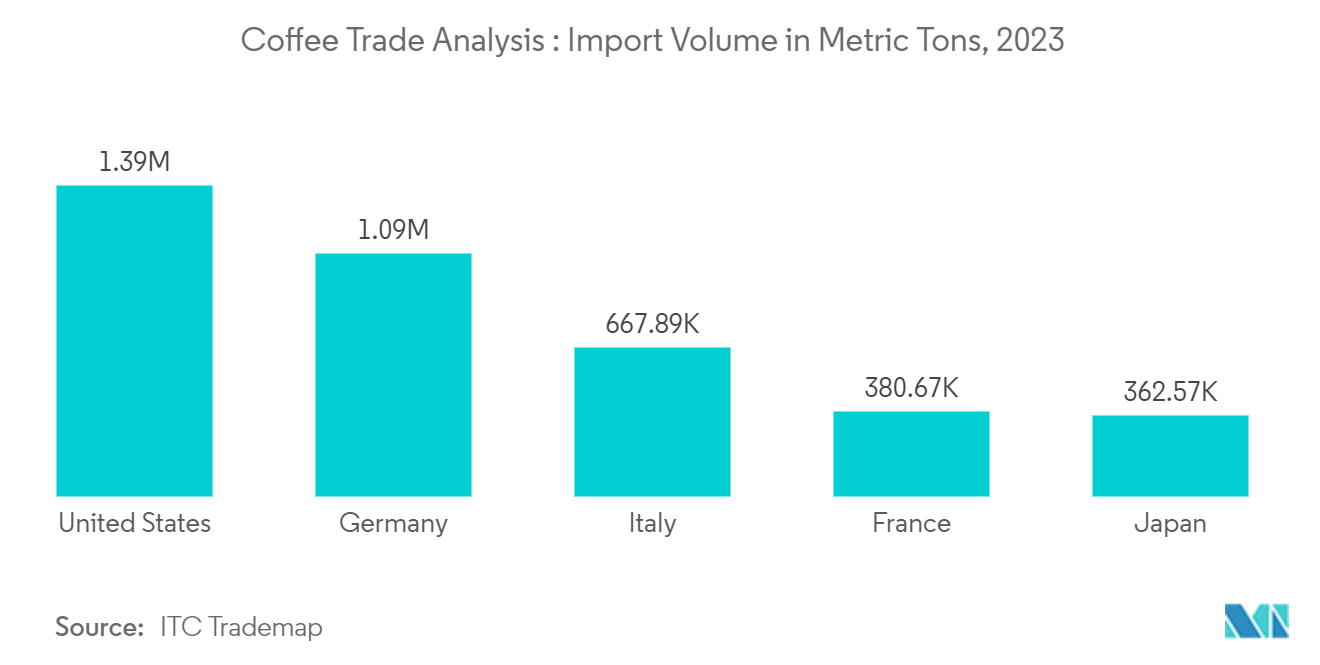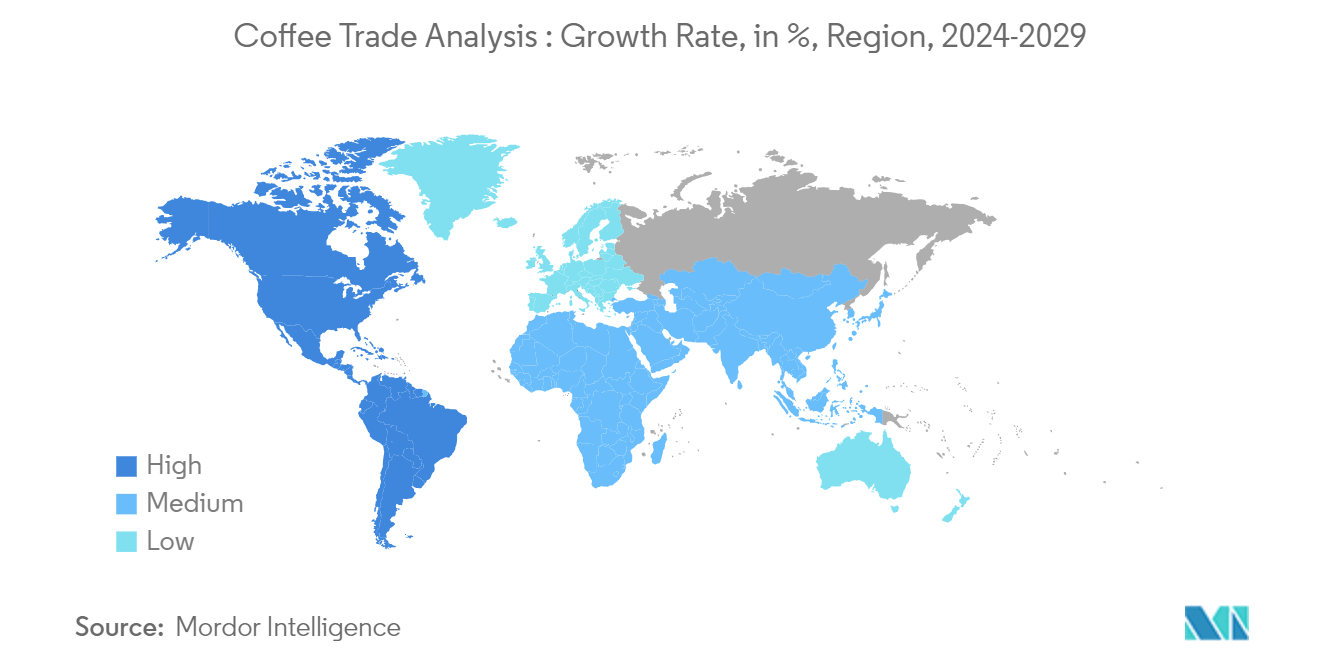Market Trends of Coffee Trade Analysis
The United States Leads in Imports of Coffee Globally
- The United States stands as the world's leading coffee consumer. On average, each American enjoys over one cup of coffee daily. Notably, the United States accounts for 55% of the coffee consumption of all European Union countries combined. The US coffee beans are imported from Colombia, Brazil, and Switzerland. For over a decade, Colombia and Brazil have dominated coffee exports to the United States. These two South American countries have consistently competed for the leading position. In 2023, Brazil narrowly outpaced Colombia, exporting coffee worth USD 1.41 billion, slightly ahead of Colombia's USD 1.40 billion.
- Specialty coffee is at the forefront of a transformation in the US coffee market, significantly boosting the country's trade. According to the National Coffee Association, more Americans are turning to specialty coffee. Among the various specialty coffee offerings, espresso-based drinks have seen the most significant surge in consumption. This trend indicates a notable shift in consumer preferences, with many opting for espresso over traditional filter coffee when dining out. The rising popularity of specialty coffee is driving an overall increase in coffee consumption. As specialty coffee cements its influence in the broader US coffee landscape, it is reshaping the industry and broadening its appeal to a more diverse audience.
- The United States Department of Agriculture (USDA) warns of a looming decline in Hawaiian coffee production. This downturn is attributed to threats like the invasive coffee berry borer beetle, the coffee leaf rust fungus, and unpredictable weather patterns such as droughts and flooding. As a result, the country heavily depends on coffee imports to meet its domestic demand.

Brazil Dominates the Global Coffee Exports
- Brazil accounts for over 28% of the global coffee supply. The majority of coffee cultivated in Brazil is of the Arabica variety, constituting approximately 80% of the total yield. The burgeoning global demand for coffee is pivotal in propelling Brazil's economic expansion and industrialization.
- Brazil's coffee industry is poised for a significant boost in production and exports for the 2024/25 market year, as highlighted in the annual report by the USDA Foreign Agriculture Service (FAS). This surge is largely attributed to improved weather conditions in Brazil and a rising global demand for its coffees.
- Data from the International Trade Center (ITC) Trademap reveals that in 2023, Brazil's top coffee importers were the United States, which imported 324,148 metric tons, followed by Germany at 304,954 metric tons, Italy at 184,419 metric tons, and Japan at 122,070 metric tons. Currently, Brazil predominantly exports its coffee to Germany and the United States. Notably, the United States is the world's largest single coffee buyer, with its North American market representing over a quarter of the global coffee import value. This robust coffee trade underscores Brazil's position as one of the top 10 trading partners of the United States.
- The increased demand for Brazilian coffee is largely due to below-average harvests in Vietnam and disruptions in the Red Sea, which have pushed global robusta prices higher. Projections from the Brazilian Ministry of Agriculture indicate that the 2024 coffee harvest is poised to generate a gross revenue of approximately USD 10.7 billion. This figure represents a 17% increase from 2023. Arabica coffee is expected to account for 72% of this revenue, while robusta will contribute the remaining 28%. Arabic coffee revenue is projected to rise by 9.4%, whereas robusta revenue is set for a more significant rise of 29%, provided Brazil experiences favorable weather conditions.


